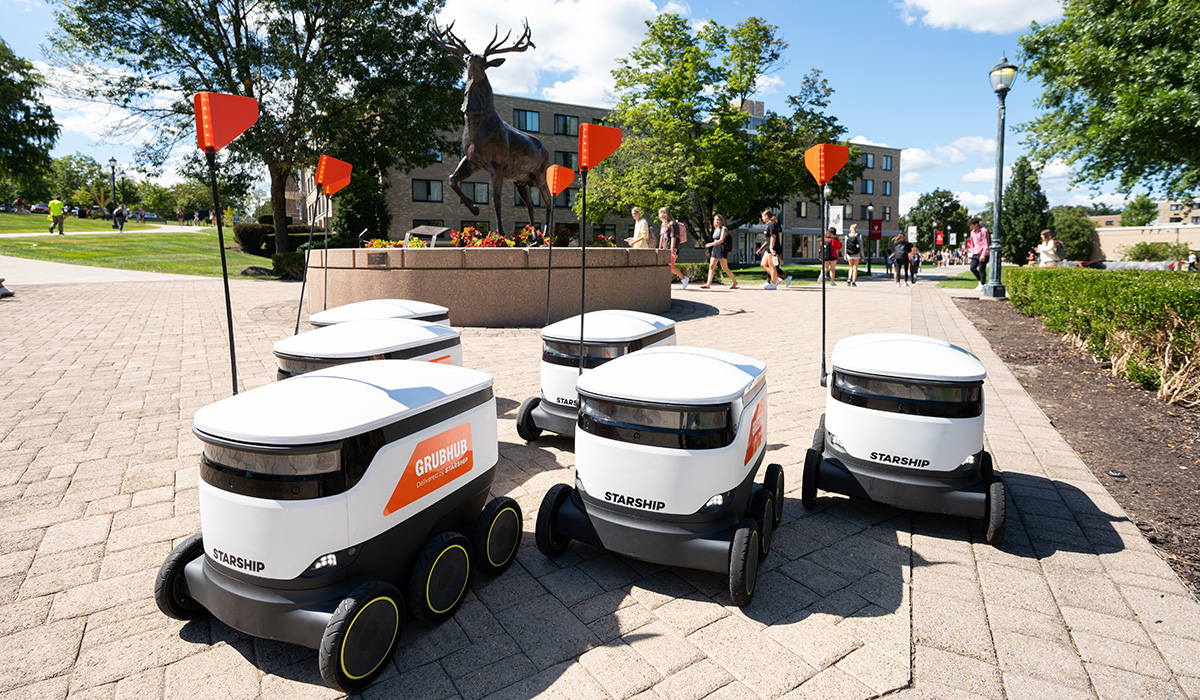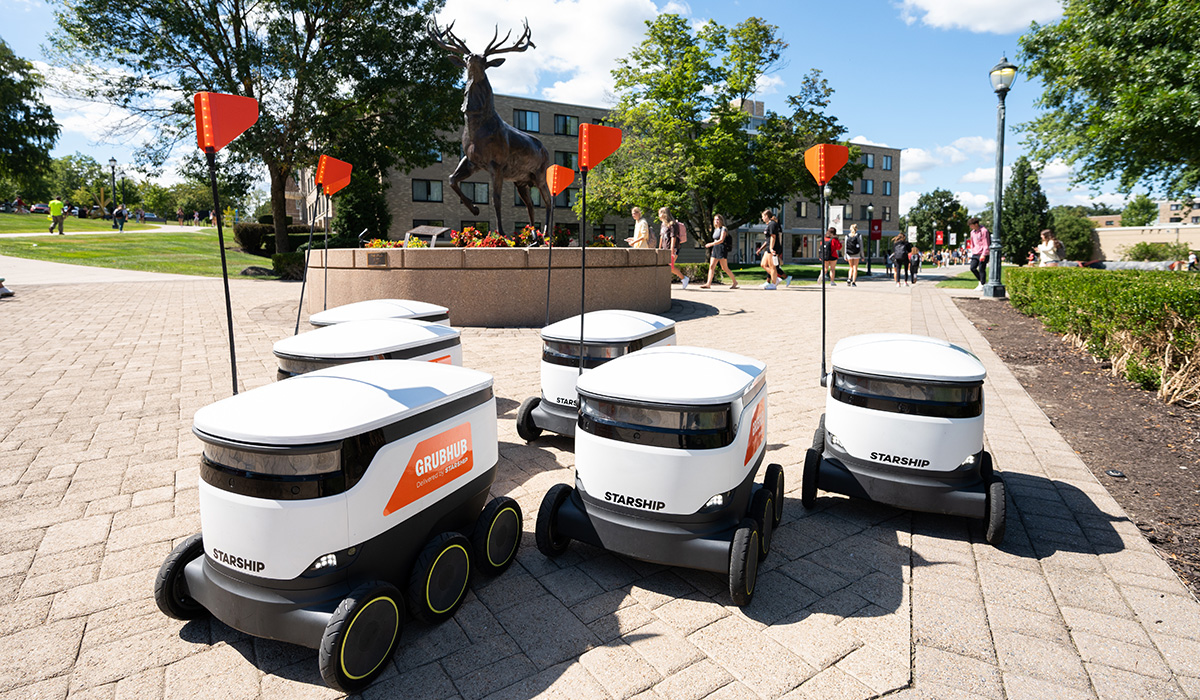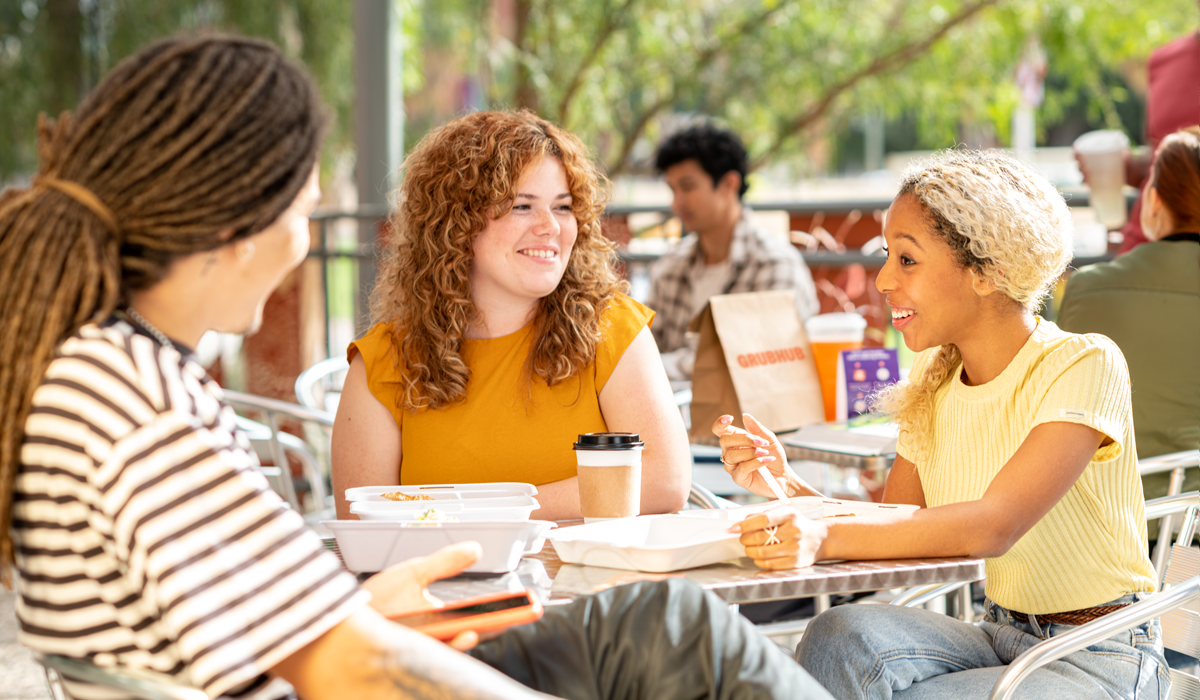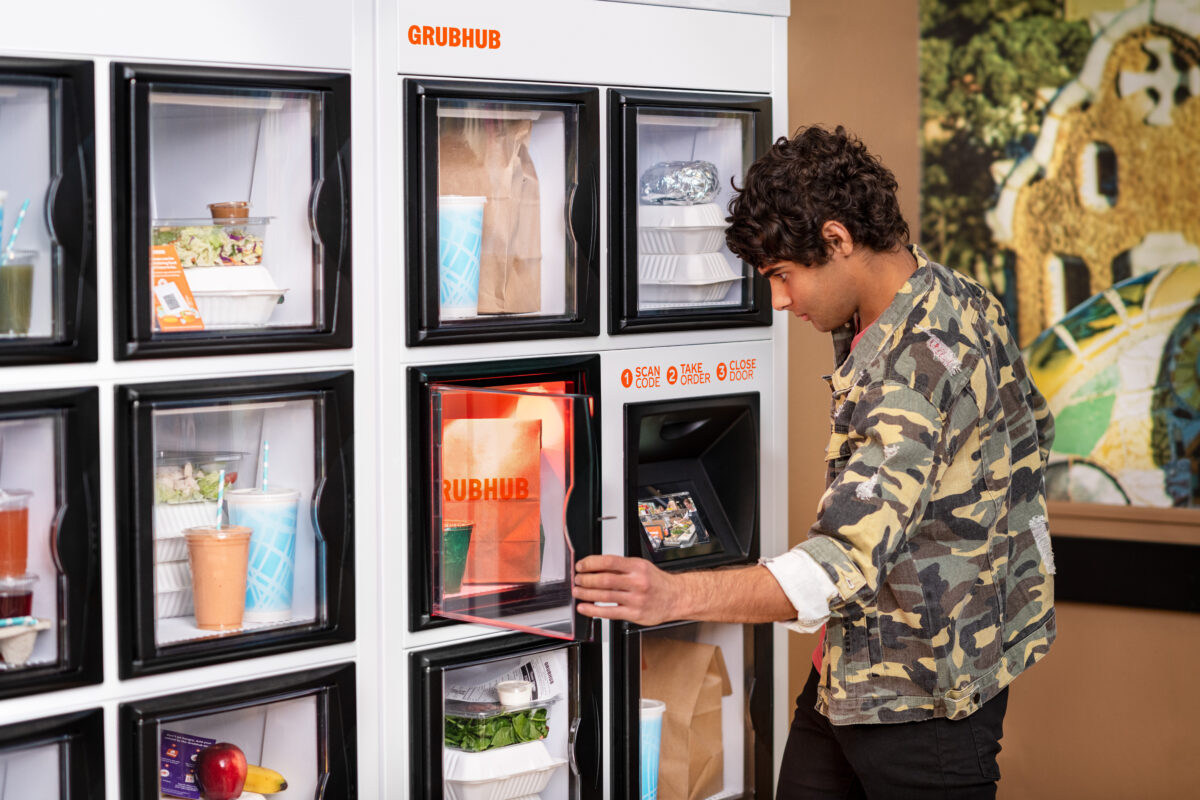Food delivery robots are the latest innovation in the restaurant industry.
These fully autonomous, compact devices roll around hotels/resorts, cities, and college campuses, providing secure, contactless food delivery.
If your dining operation is looking for ways to reduce or reallocate labor—and delight customers in the process—robot delivery could be the ideal solution.
Before you take the leap, it’s important to understand the process. How do food delivery robots work? Can they operate in areas with traffic? Are they secure? Let’s explore what’s involved in this cutting-edge delivery technology.
Food delivery robot technology
Self-driving robots are small, but they’re packed with technology. While every manufacturer uses a proprietary design, most models feature a few key elements:
- Sensors and cameras. These devices monitor the area around the robot, enabling it to detect and avoid people, vehicles, garbage cans, and other obstacles. For example, autonomous robots from Starship Enterprises are equipped with 12 cameras.
- GPS. The onboard GPS enables the system to track the robot’s location at all times. It also helps the robot navigate to the correct location.
- Artificial intelligence (AI). Built-in AI enables self-driving robots to act autonomously. It collects data from each system, makes decisions about the route, identifies crosswalks and traffic signals, and scans the surrounding area to ensure pedestrian and driver safety—all without needing human input.
- Batteries. Self-driving robots are almost always battery-powered, so they’re efficient, eco-friendly, and easy to charge between uses.
- Security systems. To protect the food, the robot locks automatically after loading. It will only open for the correct customer; with Grubhub On Site, the recipient can unlock the robot with a few taps in the Grubhub app. If an unauthorized person tries to get in, the robot typically sounds an alarm.
Food delivery robots usually have an insulated container, which helps keep food fresh at the correct temperature. Meanwhile, the lid keeps out precipitation and debris. For safety, most robots travel at a normal pedestrian walking speed—usually between 3 and 5 miles per hour.
How do food delivery robots work for restaurants?
When a restaurant uses food delivery robots, the process isn’t much different from a typical delivery. Here’s how it works with Grubhub On Site:
- The order is sent to the kitchen display system.
- Restaurant staff pack the food, place it into the robot, and lock the lid.
- The robot chooses the most efficient route and delivers the food.
- The robot returns to the restaurant or a central hub.
Here’s the key: Robots aren’t limited by road access. They typically move along the sidewalk like a pedestrian. That’s a critical feature, particularly if your restaurant operates on a busy college campus or a sprawling resort property.
These robots can reach areas that are hard to get to with a vehicle—dorms that don’t have immediate road access, for example, or classroom buildings in the middle of campus.
How do food delivery robots work for customers?
On the customer’s end, food delivery robots add a touch of exciting innovation to the food-delivery process. With Grubhub On Site, the experience is quick and easy:
- The customer places an order in the app and specifies the delivery location.
- The Grubhub app keeps the customer updated on the order progress.
- The customer tracks the robot’s progress when it departs.
- The customer unlocks the robot using the Grubhub app and removes the food.
Depending on the app, customers can typically drop a pin for their location. That way, the robot can reach them whether they’re sitting by the pool or studying outside at a picnic table.
Benefits of food delivery robots
Food delivery robots could be a viable investment for anyone running a dining operation. Especially for college campuses or hotels and resorts, you should consider the benefits of how they can elevate your dining experience. Some advantages include:
- Fast, autonomous delivery in pedestrian-only areas
- Reduced need for delivery drivers, lowering staffing costs
- Safe delivery at any time, in any weather
- Contactless delivery minimizes contact with food and benefits health-conscious customers
- Lower emissions, thanks to battery-powered operation
Don’t forget about the fun factor—after all, robots add a futuristic twist to an otherwise routine food delivery. The novelty alone can give you a competitive advantage.
If you’re looking for cost-effective ways to streamline food delivery and elevate your dining experience with innovative technology, autonomous robots can be an efficient solution.
With Grubhub On Site, the process is fast and hassle-free; we’ve built partnerships with leading technology providers to integrate self-driving food delivery robots seamlessly into your existing restaurant and dining program.
To find out how the technology can benefit you, learn more about Grubhub On Site today.





